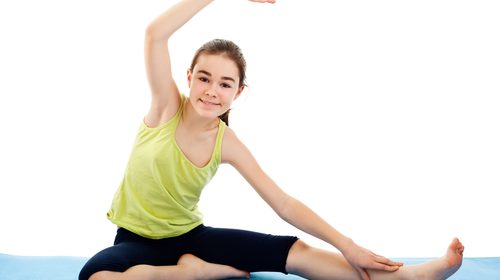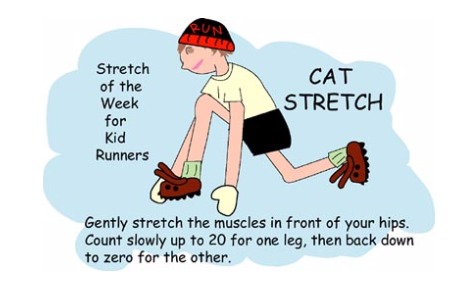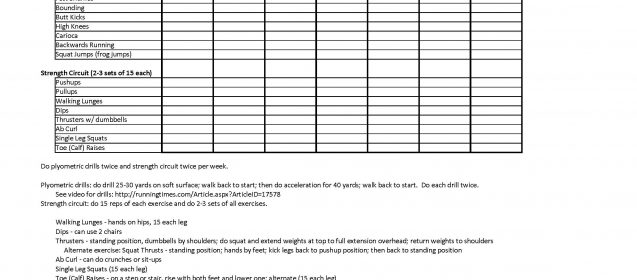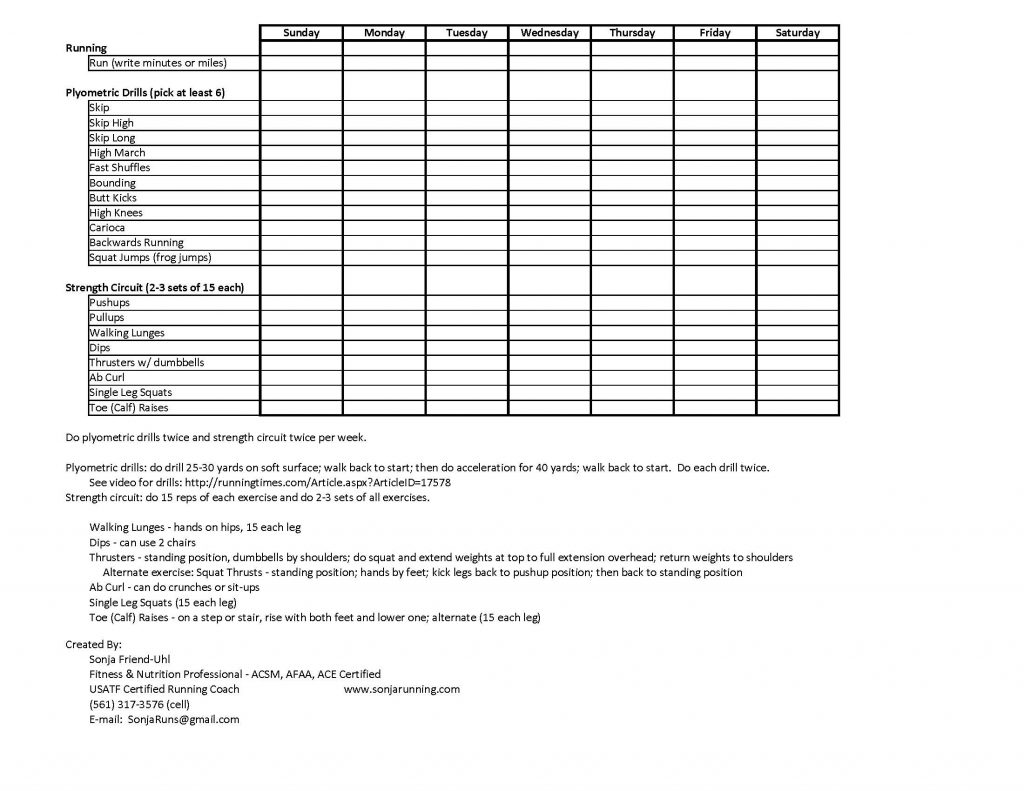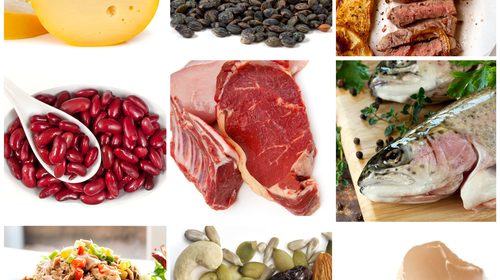Youth Running Plan Guidelines
Road racing used to be something just for the adult runner. Now we are starting to see a great number of road races including events for kids such as the last mile of the marathon, “Kid K’s”, and the Mile Fun Runs. The timing could not be better with childhood obesity at epidemic proportions in our country. Adults need to be careful however in making sure their children are prepared for the event and participating in an event that is appropriate for their age and fitness level. Injuries and life threatening illness (heat stroke) can occur if proper care is not taken. I have provided some safe and effective guidelines for getting your child ready to participate in the program below.
Training Plans to complete up to 1.5 Miles:
PLAN 1
Day 1, 2, & 3 Get out your watch and start out as easy as can be. Run for a minute, walk for a minute, run for a minute, walk for a minute, until you have run a mile. Don’t worry about how long it takes you but maybe on the 3rd day, just make a note.
Next week Day 4, 5 &6 Run 2 minutes, walk 1, run 2, walk 1 etc.
Next week Day 7, 8, & 9 Run 3 minutes, walk 1, run 3, walk 1
Next week Day 10, 11, 12 Run 5 min., walk 1 min. run 5 min. walk 1 min. and so on
Next week Day 13 Run 7 and see if you can run more, walk if need be for a minute, then finish the mile.
PLAN 2 (All running)
Each day run only a 200m lap (half of track) When this becomes easy double your distance. When 400m is easy double again and so on.
**Use a Daily Running Journal to keep track of your progress! Free downloads are available along with other great kid running tips at www.kidsrunning.com.
Stretching Guidelines:
Stretching…It’s just something you’ve got to do if you are a runner. Some people like it, some hate it, but it’s the rules! It keeps you relaxed, flexible, increases your range of motion, and keeps you injury free. Stretch all of the major muscle groups in your body, but pay close attention to your legs. www.Kidsrunning.com has great pictures and descriptions of these important stretches you can view online or download and save in your journal.
Things to Remember:
- Don’t bounce
- Keep it comfortable. Never stretch until you have pain.
- Count to at least 10…slowly. Better yet, count to 20.
- If you need to practice your math skills, count down from 20 to 0.
- Don’t stretch a cold muscle. Make sure you’ve jogged around a little before you stretch.
- Stretch a bit before you run. Stretch a lot after.
Advice on Shoes & Apparel:
Shoes: How to get a good fit:
*Shop for shoes at the end of the day when feet have expanded.
*Measure both feet and allow for a half-inch (thumb-width) between the end of the foot. Then fit the shoes to the larger foot.
*Try on the shoes with the socks that will be worn most often with the shoes.
*Make sure the heels don’t slip.
*Go for a short test run/walk to make sure the new shoes are comfortable.
*Don’t be tempted to buy fad-shoes with an elevated heel/sole. These are dangerous for sports activities.
*Break the shoes in gradually. Don’t wear brand new shoes for a race.
Check for the development of blisters (prevent with wicking socks and band-aid-type blister prevention aids).
*After the age of ten, the American Podiatric Medical Association recommends a good sturdy running shoe. So right about now would probably be the time to get to the running store to have your child’s specific biomechanics evaluated. Buy a good fitting shoe that meets his/her structural needs. There are many types: cushioned, stability, motion control, to name a few. Later, you can buy from a catalog such as Road Runner. Sports, which also can help with fit/needs and has a good return policy if the shoes don’t work for you. For children under 10 years old a general, sturdy fitness shoe is fine.
*Be sure to keep an extra supply of laces around, both the right length and in good condition so that your children can always keep their shoes tied properly. If your child can’t tie, try the elastic curly laces. They turn the shoes into slip-ons and result in a snug fit. Then spend some time, teaching them how to tie. If you follow the suggestions above, you will be meeting the most basic need for running gear – a good running shoe.
Apparel:
Lightweight, light-colored clothing is best. Ventilated shorts and t-shirts let heat dissipate.. DO NOT wear long sleeves or long pants or sweat suits. Purposefully running in sweat suits on hot days to lose water weight is dangerous!
Proper Hydration & Heat/Humidity Precautions:
Parents should know that active children do not adjust to hot temperatures (greater than 95F) as well as adults. Their body surface, as a proportion of their overall weight, is much greater than an adult’s. So they produce more heat during physical activity and they sweat less than adults. This reduces their ability to get rid of body heat.
In addition, kids often don’t drink enough to replenish the fluids they lose during prolonged activity. This can lead to severe dehydration and potentially life-threatening heat illnesses. Here are some simple tips to help your child stay safely hydrated while exercising or playing outdoors in the heat:
- Know the physical condition of the child. Lack of physical fitness can impair the performance of any child who is active in the heat. Dehydration of more than 3% of body weight increases a child’s risk of a heat-related illness. For kids participating in organized sports, set practice schedules during cooler hours, especially if the child isn’t in great shape.
- Acclimatize them to the heat. Gradually introduce young athletes to the heat. Slowly increase the intensity and length of workouts over 10 to 14 days. This helps train their bodies to drink more, increase blood volume, and sweat more. Sweating helps release heat from the body.
- Give them water or sports drinks. “The key is water and electrolytes,” says Albert C. Hergenroeder, professor of pediatrics at Baylor College of Medicine and chief of the sports medicine clinic at Texas Children’s Hospital. Children and teens who exercise hard or play sports on hot days (with temperatures between 79 and 84 F) should cut back their time on the playing field by taking more frequent breaks, according to the American Academy of Pediatrics (AAP). Young athletes should be well hydrated before they begin to play. Then, during play, coaches or parents should make sure children drink often, even if the children aren’t thirsty. The AAP recommends five ounces of cold tap water or sports drink for a child weighing 88 pounds, and nine ounces for a teen weighing 132 pounds. One ounce is about two kid-size gulps.
- Know the weather conditions, and plan accordingly. Know the heat index: It’s the combination of high air temperatures and humidity that’s most dangerous. Exercising in a relative humidity of 35% and an air temperature of 95 degrees Fahrenheit may cause heat illness. Even dry climates can have high humidity if the sprinkler systems run before early morning practices. Avoid practice sessions during the hottest time of the day. Schedule the hardest workouts for early morning or late afternoon/evening.
- Use Sunscreen! When a child is going to be exposed to the intense summer rays of the sun, apply at least SPF 15 sunscreen and have them wear protective eyewear that filters out UVA and UVB rays. Consider having the child wear a visor that will shade their eyes and skin but will allow heat to be transferred off the top of their head.
- Watch them closely. Watch your athletes before, during, and after practice for any signs of trouble. Pay special attention to athletes who eagerly compete at or above their capabilities. If a child looks sick, take him or her off of the track or course. Monitor the child closely while the child rests and drinks fluid. “Kids with moderate heat injuries — not heat stroke, but heat exhaustion — may look fine 15 minutes later if you give them something to drink and allow them to cool down,” says Hergenroeder. “But they’re still dehydrated. They should take the day off, and you should keep an eye on them when they come back to practice tomorrow.”
- Have an emergency plan.Parents and/or staff should all be trained in first aid. Make sure everyone involved knows what to do during an emergency.
Reviewed by Charlotte E. Grayson-Mathis, MD.


